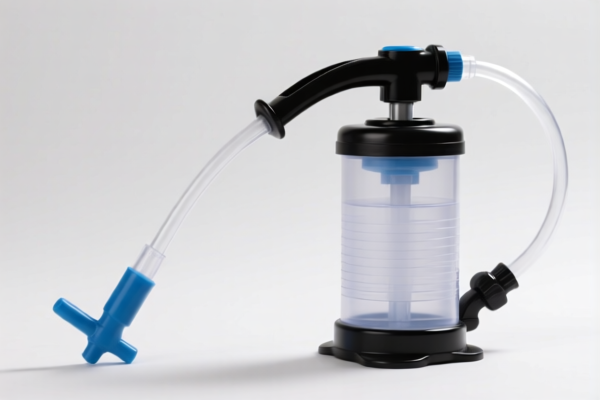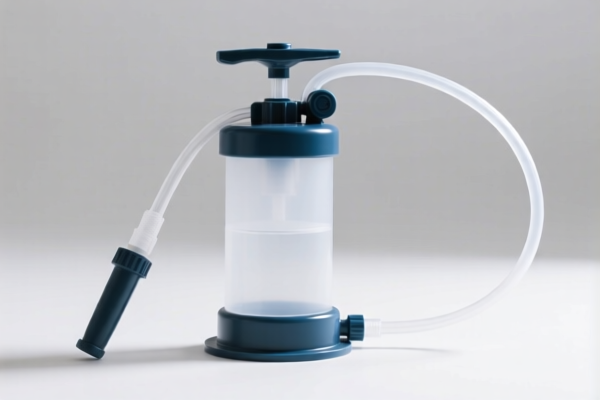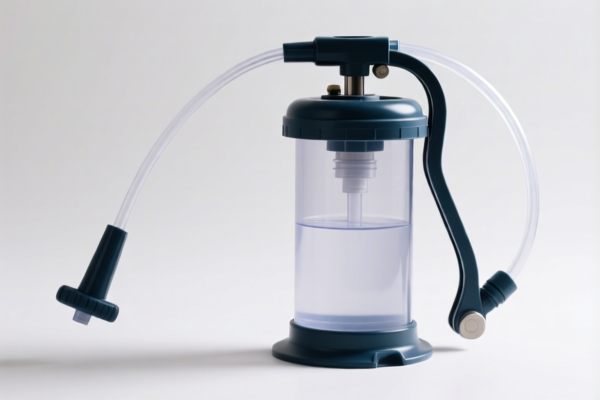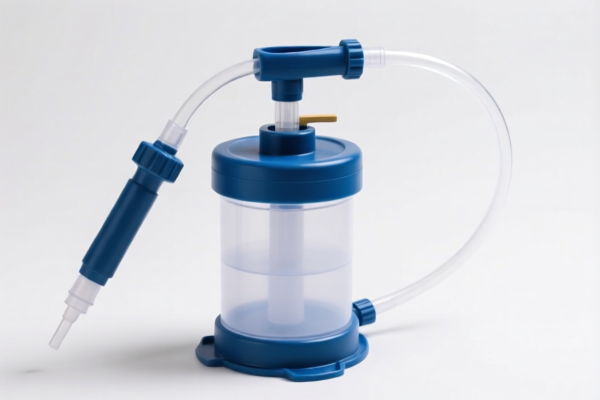| HS Code | Official Doc | Tariff Rate | Origin | Destination | Effective Date |
|---|---|---|---|---|---|
| 8413200000 | Doc | 55.0% | CN | US | 2025-05-12 |
| 8413919096 | Doc | 55.0% | CN | US | 2025-05-12 |




Manual Suction Pump
A manual suction pump is a mechanical device designed to create a vacuum using human power. It operates by displacing air from a closed container, reducing the pressure within and enabling the transfer of fluids or the creation of a negative pressure environment.
Material
Construction materials vary depending on the intended application and budget. Common materials include:
- Body/Housing: Typically constructed from durable plastics (polypropylene, PVC), aluminum alloys, or stainless steel for corrosion resistance.
- Piston/Plunger: Often made from rubber, nitrile, or other elastomers for a tight seal against the pump chamber. Stainless steel or brass may be used for higher-pressure applications.
- Valves: Rubber, silicone, or PTFE (Teflon) are common valve materials to ensure one-way flow and prevent backflow.
- Hoses/Tubing: Flexible materials like PVC, silicone, or reinforced rubber are used for fluid transfer.
Purpose
The primary purpose of a manual suction pump is to move fluids or create a vacuum without the use of electricity or compressed air. Specific applications include:
- Fluid Transfer: Moving liquids from one container to another.
- Vacuum Creation: Generating a negative pressure for applications like degassing, suction, or sample collection.
- Drainage: Removing fluids from a confined space.
Function
Manual suction pumps function based on the principles of positive displacement. The pump consists of a chamber with an inlet and an outlet, both equipped with one-way valves.
- Intake Stroke: When the plunger is pulled outwards, it increases the volume of the chamber, creating a partial vacuum. The inlet valve opens, allowing fluid to be drawn into the chamber.
- Discharge Stroke: When the plunger is pushed inwards, it decreases the volume of the chamber, increasing the pressure. The inlet valve closes, and the outlet valve opens, forcing the fluid out of the pump.
- Repetition: Repeated strokes of the plunger continue the process of fluid transfer or vacuum creation.
Usage Scenarios
- Laboratory: Transferring liquids, vacuum filtration, sample collection.
- Medical: Suctioning fluids from wounds or body cavities (e.g., portable suction units).
- Automotive: Removing oil from engines, draining fluids from radiators.
- Plumbing: Clearing blocked drains, priming pumps.
- Aquarium/Pond Maintenance: Gravel cleaning, water changes.
- DIY/Home Improvement: Various fluid transfer tasks.
Common Types
- Hand-Operated Piston Pumps: The most common type, utilizing a simple piston and cylinder design. These are generally low-cost and versatile.
- Peristaltic Pumps: Use rollers to compress flexible tubing, creating a pumping action. Often used in applications requiring precise fluid control and contamination prevention.
- Diaphragm Pumps: Employ a flexible diaphragm to create a pumping action. Suitable for handling abrasive or corrosive fluids.
- Vacuum Pumps (Hand-Operated): Designed specifically for creating a vacuum, often used with a gauge to monitor pressure.
- Syringe Pumps (Manual): Used for precise, controlled delivery of small volumes of fluid, typically in medical or laboratory settings.
Manual suction pumps fall under the category of pumps for liquids, specifically hand pumps not covered by subheading 8413.11 or 8413.19. These pumps are used for transferring liquids through manual operation.
The following HS codes are relevant:
-
8413200000: This code covers pumps for liquids, whether or not fitted with a measuring device; liquid elevators; part thereof: Hand pumps, other than those of subheading 8413.11 or 8413.19.
- 84: Chapter 84 – Nuclear reactors, boilers, machinery and mechanical appliances; parts thereof. This chapter broadly covers a wide range of machinery.
- 13: Heading 8413 – Pumps for liquids; liquid elevators. This heading specifically focuses on pumps and related equipment for liquid handling.
- 20: Subheading 8413.20 – Hand pumps, other than those of subheading 8413.11 or 8413.19. This specifically identifies hand-operated pumps, excluding certain specialized types.
-
8413919096: This code covers pumps for liquids, whether or not fitted with a measuring device; liquid elevators; part thereof: Parts: Of pumps: Other Other.
- 84: Chapter 84 – Nuclear reactors, boilers, machinery and mechanical appliances; parts thereof.
- 13: Heading 8413 – Pumps for liquids; liquid elevators.
- 91: Subheading 8413.91 – Parts of pumps.
- 90: Subheading 8413.91.90 – Other. This covers parts of pumps not specifically classified elsewhere.
Regarding HS code 8413200000 and 8413919096, the applicable tax rate is a base tariff of 0.0%, a surcharge of 25.0%, and a surcharge of 30.0% after April 2, 2025, resulting in a total tariff of 55.0%.
Customer Reviews
No reviews yet.